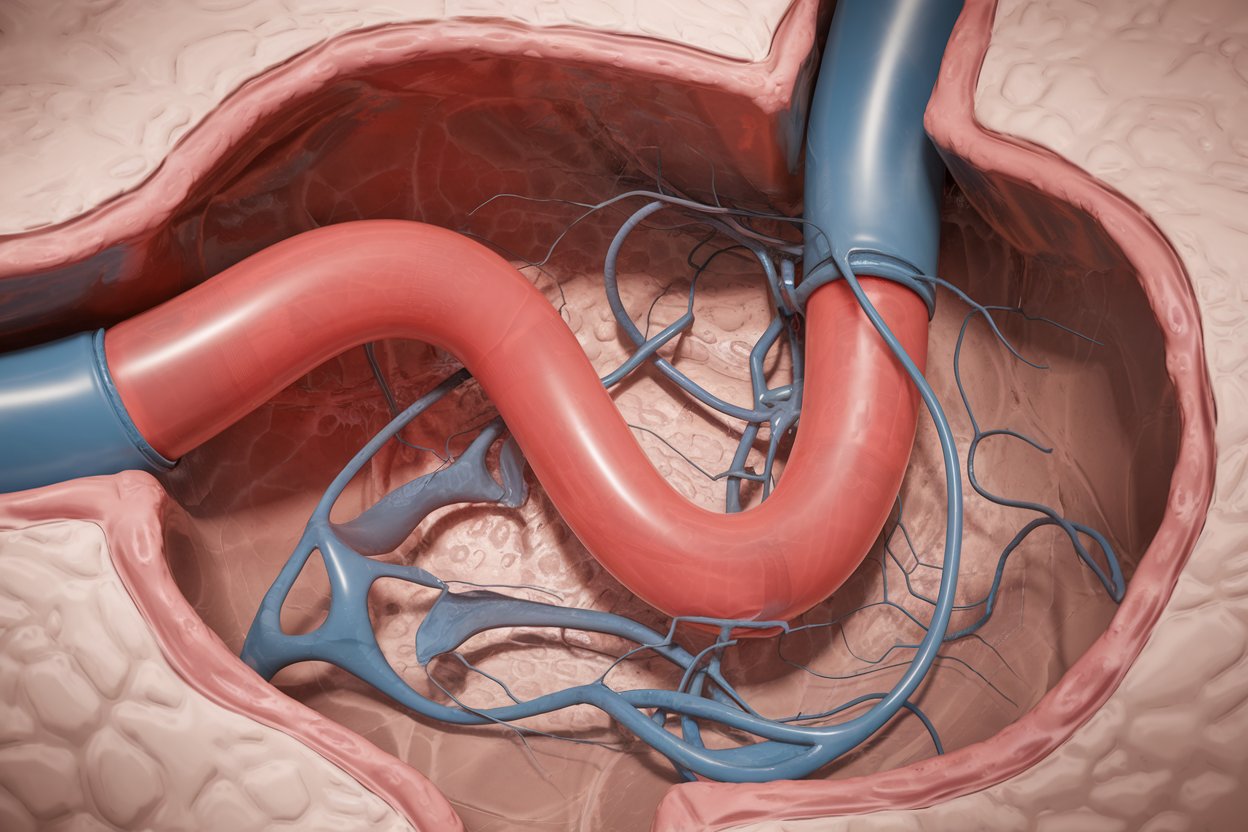
Vascular malposition is a medical condition where blood vessels are abnormally placed or misaligned. This can lead to various complications, including restricted blood flow, increased risk of blood clots, and potential organ damage. Understanding this condition is crucial for early diagnosis and effective treatment. In this blog post, we will explore 30 intriguing facts about vascular malposition, shedding light on its causes, symptoms, and treatment options. Whether you're a medical student, a concerned patient, or just curious, these facts will provide valuable insights into this complex condition. Let's dive into the world of vascular malposition and uncover what makes it so significant.
Key Takeaways:
- Vascular malposition is an abnormal placement of blood vessels, causing symptoms like pain and swelling. It can be congenital or acquired, and treatment options include medication, surgery, and minimally invasive procedures.
- Different types of vascular malposition, such as AVMs and venous malformations, have unique characteristics and implications. Genetic mutations, family history, and trauma are common causes, and early detection is crucial for effective treatment.
What is Vascular Malposition?
Vascular malposition refers to the abnormal placement or alignment of blood vessels within the body. This condition can lead to various health issues, depending on the severity and location of the misalignment. Understanding the facts about vascular malposition can help in recognizing symptoms and seeking appropriate treatment.
- Vascular malposition can occur in any blood vessel, including arteries, veins, and capillaries.
- This condition is often congenital, meaning it is present at birth.
- Some cases of vascular malposition are acquired due to injury or surgery.
- Symptoms vary widely based on the affected area and can range from mild discomfort to severe pain.
- Diagnostic imaging, such as MRI or CT scans, is commonly used to identify vascular malposition.
- Treatment options include medication, surgery, or minimally invasive procedures like angioplasty.
Common Types of Vascular Malposition
There are several types of vascular malposition, each with unique characteristics and implications. Knowing these types can aid in understanding the specific challenges and treatments associated with each.
- Arteriovenous malformations (AVMs) involve abnormal connections between arteries and veins.
- Venous malformations are irregularities in the veins, often causing swelling and pain.
- Capillary malformations, also known as port-wine stains, are visible on the skin and can be purely cosmetic or indicate deeper issues.
- Lymphatic malformations affect the lymphatic system, leading to fluid buildup and swelling.
- Pulmonary arteriovenous malformations (PAVMs) occur in the lungs and can cause breathing difficulties.
- Coronary artery malposition can lead to heart problems, including heart attacks.
Causes and Risk Factors
Understanding the causes and risk factors of vascular malposition can help in early detection and prevention. While some factors are unavoidable, others can be managed to reduce risk.
- Genetic mutations are a primary cause of congenital vascular malposition.
- Family history of vascular malposition increases the risk of developing the condition.
- Trauma or injury to blood vessels can lead to acquired vascular malposition.
- Certain medical conditions, like Ehlers-Danlos syndrome, are associated with higher risk.
- Radiation therapy for cancer treatment can sometimes cause vascular malposition.
- Infections that affect blood vessels may also contribute to this condition.
Symptoms and Complications
Recognizing the symptoms of vascular malposition is crucial for timely diagnosis and treatment. Complications can arise if the condition is left untreated.
- Common symptoms include pain, swelling, and visible abnormalities on the skin.
- In severe cases, vascular malposition can lead to tissue damage due to inadequate blood supply.
- Blood clots are a potential complication, especially in venous malformations.
- Pulmonary arteriovenous malformations can cause shortness of breath and fatigue.
- Neurological symptoms, such as headaches or seizures, may occur if the brain's blood vessels are affected.
- Heart-related complications can arise from coronary artery malposition, including arrhythmias and heart failure.
Diagnosis and Treatment
Accurate diagnosis and effective treatment are essential for managing vascular malposition. Various methods and approaches are available depending on the specific type and severity of the condition.
- Ultrasound is often the first diagnostic tool used to detect vascular malposition.
- MRI and CT scans provide detailed images for a more accurate diagnosis.
- Angiography involves injecting a contrast dye into blood vessels to visualize abnormalities.
- Medications, such as blood thinners, can help manage symptoms and prevent complications.
- Surgical options include resection of the malformed vessels or bypass surgery.
- Minimally invasive procedures, like embolization, can block abnormal blood flow and reduce symptoms.
Final Thoughts on Vascular Malposition
Understanding vascular malposition can be a game-changer for anyone dealing with this condition. Knowing the symptoms, causes, and treatment options helps in managing it effectively. Early diagnosis and proper medical care are crucial.
Remember, vascular malposition isn't a death sentence. With advancements in medical science, many people lead normal lives despite the condition. Always consult healthcare professionals for personalized advice and treatment plans.
Staying informed empowers you to make better health decisions. Keep learning, stay proactive, and don't hesitate to seek help when needed. Your health is your wealth, and being knowledgeable about conditions like vascular malposition can make all the difference.
Thanks for sticking with us through this informative journey. Stay curious, stay healthy!
Frequently Asked Questions
Was this page helpful?
Our commitment to delivering trustworthy and engaging content is at the heart of what we do. Each fact on our site is contributed by real users like you, bringing a wealth of diverse insights and information. To ensure the highest standards of accuracy and reliability, our dedicated editors meticulously review each submission. This process guarantees that the facts we share are not only fascinating but also credible. Trust in our commitment to quality and authenticity as you explore and learn with us.
